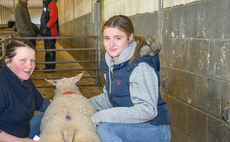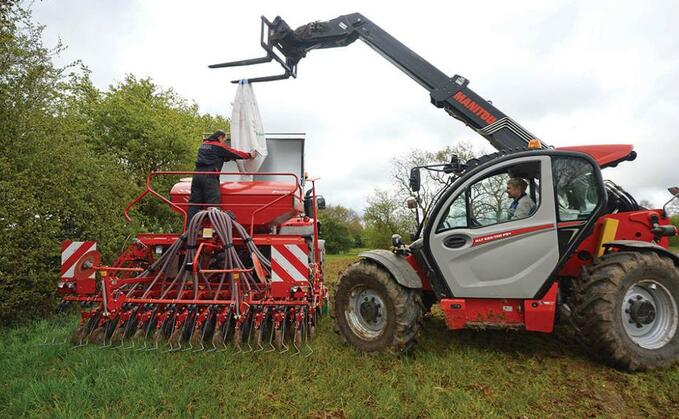
As a long-time operator of Manitou telehandlers, dairy farmer Paul Rowland tells James Rickard how he is getting on with the French manufacturer's latest model.
Well-placed to comment on how the latest generation of Manitou telehandler performs, Lancashire dairy farmer Paul Rowland is no stranger to the French-made machines, having run them since 2004.
Now on his fifth machine in 14 years, Mr Rowland was one of the first in the country to take delivery of one of Manitou's latest ‘New Ag' machines, an MLT 635-130 PS+.
Working on a 600-head dairy farm, the new model is kept busy all year carrying out an expanding variety of jobs, including loading a diet feeder four times a day, cleaning out buildings, bedding, handling fertiliser and seed, loading muck spreaders, and a small amount of buckraking - any job which needs lifting, says Mr Rowland.
"Pre-2004, we used to operate a tractor and loader - a two-wheel drive Ford 7610 with Grays loader. It was not until we were having some building work done on-farm we tried out a telehandler for the first time. Instantly we were sold on the idea," says Mr Rowland.
To get on the telehandler ladder, the first machine was bought second-hand. All telehandlers since have been new.
Bought in April last year, the latest handler replaced a 634-120 which had 120hp, six-metre reach and a 3.4-tonne lift capacity.
"All five machines have been pretty much like for like in terms of performance, with spec levels being the biggest difference."
On average, the Rowlands keep each machine for about three and a half years and clock up about 1,100 hours per year, although the workload has increased significantly over the years, says Mr Rowland.
This has already seen the latest handler amass 1,200 hours in less than 12 months.
"When we got our first telehandler the farm used to have a trailed forager and operate a traditional herringbone parlour. Now we milk 260 cows using four robots and run our own self-propelled forager."
This extra workload sees a second loader hired in for silaging duties, often a large pivot steer machine to work on the clamp.
"This allows our telehandler to carry on with its daily workload and preserve its life."
Featuring a new control layout and a panoramic windscreen, Mr Rowland is pleased overall with the improvements to the cab.
"It does seem roomier, and the seat-integrated joystick is a lot more user-friendly.
"The new terminal also opens up a lot of options for machine adjustment, being able to easily adjust oil flow is a big bonus."
While Mr Rowland says hydraulics are a lot swifter than before, the handling capabilities of Manitou's latest telehandlers are increasingly being hampered by over-sensitive safety devices.
"Granted, they are there for a reason, and it is a similar story for all makes, but it means we have to regularly recalibrate the machine if we want to get the most out of it, effectively reteaching it what it is capable of.
"Thankfully, this is a lot easier to do with the new terminal, which guides you through every step of the procedure."
Boom suspension activation has also been simplified.
"It is now just a case of pressing a button, rather than going through a full calibration rigmarole."
The on-demand engine revs is a useful new feature overall, says Mr Rowland, which increases revs to 1,000rpm whenever the machine is put into gear or the joystick is used. However, it can also be a hindrance, he says.
"When working in confined spaces, sometimes you do not want rapid hydraulics. It would be useful if this feature could be turned on or off."
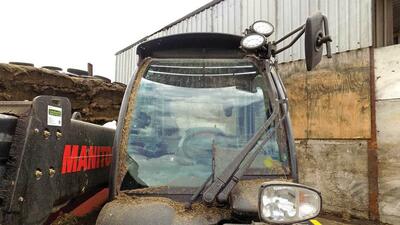
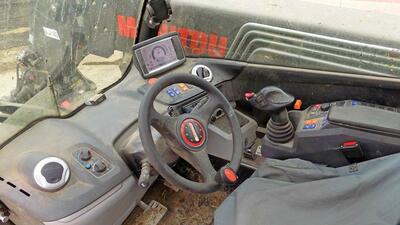
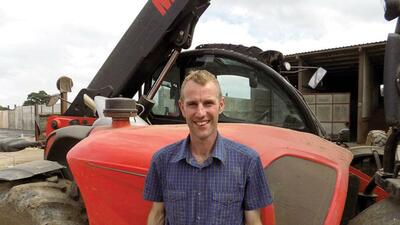
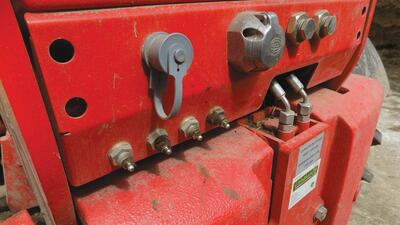
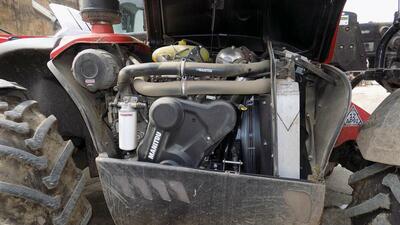
Manitou MLT 635-130 PS+ specifications
Engine: 3.6-litre, four-cylinder, Deutz
Power: 129hp
Transmission: Six-speed torque converter
Lift capacity: 3,500kg
Lift height: Six metres (to bottom of pallet forks)
More
Other features include an automatic transmission mode.
"This is good for roadwork and shifting bales, but we still prefer manual control for around the yard."
In addition to this is an automatic declutch feature which puts the machine into neutral when a certain amount of braking force is applied.
"We were initially sceptical about this feature, but it does take a lot of strain off the transmission, especially for start/stop loading work. And as the machine has been broken in over the last 12 months, we have found the re-engagement of the transmission has gradually got smoother too."
Power for the MLT 635-130 comes from a Deutz engine, now with AdBlue to tackle emissions.
"Our last model was Mercedes Benz power and the one before was a Perkins.
"Between the three engines there has been no real noticeable difference in engine performance. If anything, we would say the latest is a little bit better on fuel use. AdBlue use is not too bad either, with the AdBlue tank only filled once every three fills of the diesel tank.
"I would also say maintenance is easier with the latest model, with more space to clean out radiators and conveniently grouped greasing points, plus the hydraulic oil only needs changing every 2,000 hours."
Farm facts

- Located near Preston, Lancashire
- Dairy farm milking 260 Holsteins through four DeLaval milking robots, 600 head of cattle altogether
- Own 77 hectares (190 acres) and rent 77ha (190 acres)
- Cows housed all year
- Along with Paul Rowland, his parents Jim and Barbara are also partners in the business
- Most of the farm is down to grass, with an annual 16ha (40-acre) crop of wholecrop wheat
What's next?
As yet, Mr Rowland sees no reason to move away from Manitou.
"The machines have proven good value for money and the dealership support has been good, although with the news our local John Deere dealer now has to carry the Kramer franchise, this may alter in the future.
"We have made the transition to a new dealer for product back-up, but they are new to the Manitou product and still have some learning to do.
"Manitou telehandlers also seem to hold their value well, maybe not quite as well as a JCB, but those are more expensive in the first place.
"Although we have hired in JCB telehandlers in the past, we never just seem to get on with them as well as we do with the Manitous.
"It is small gripes such as the door handle placement, access and joystick design. They also seem to be hard revving machines. A lot of it comes down to personal preference.
"Despite a few gripes, we are pleased with how the Manitou machines have evolved, and the latest generation telehandlers are definitely more refined and more comfortable compared to their predecessors."
























